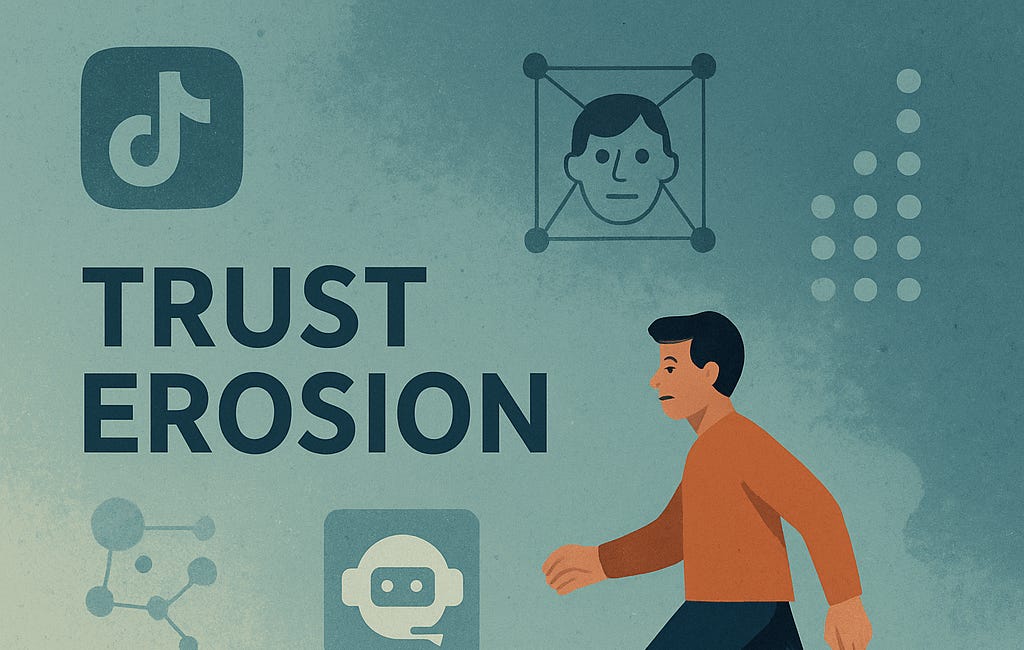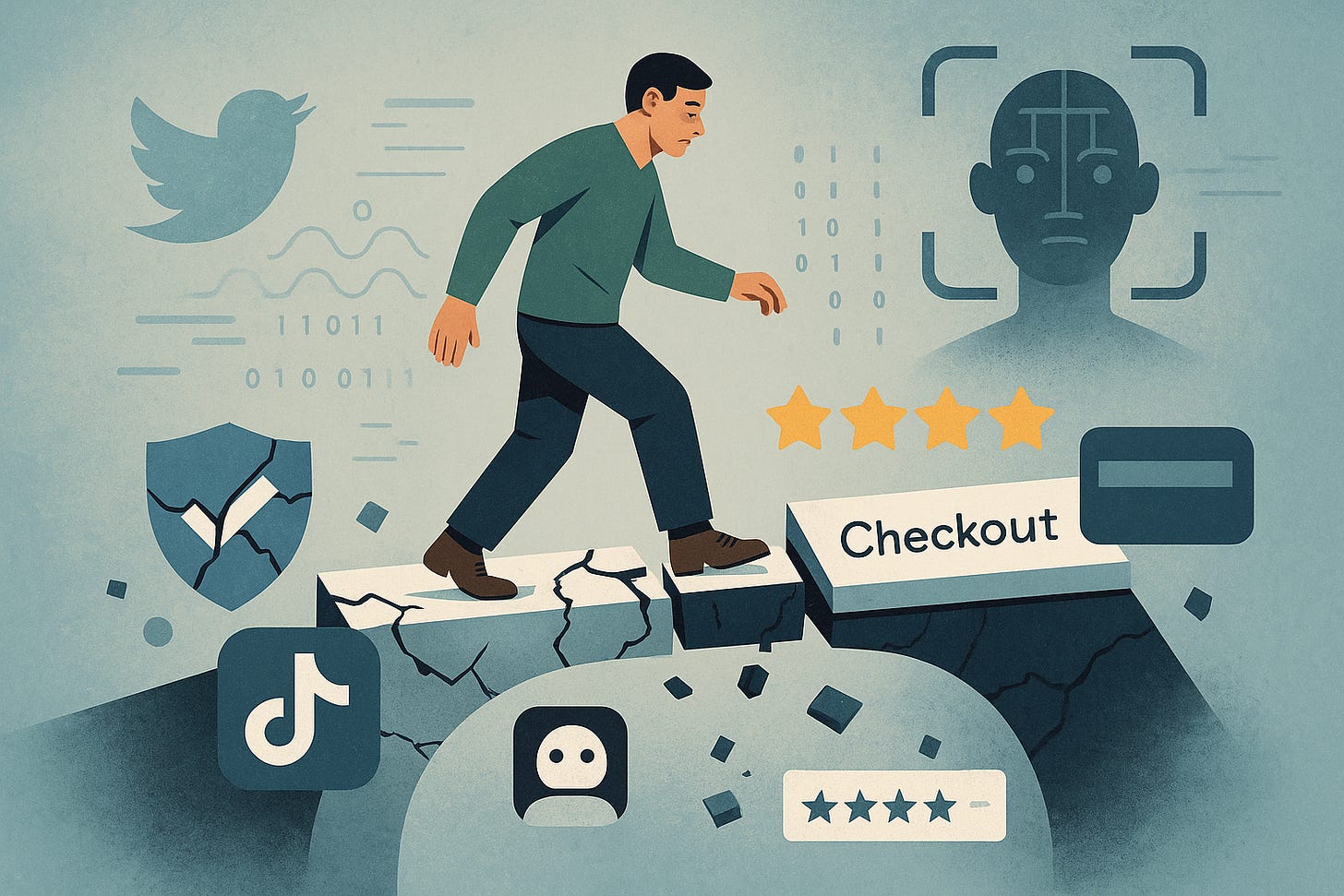Trust, Interrupted: How Modern UX and AI Are Breaking, and Remaking Buyer Confidence
Meet the new trust-conscious consumer: para-social, AI-skeptical, emotionally intuitive, and navigating every click as a micro-trust transaction.
The Trust Buyer Persona: A New Decision-Maker
In the late 1990s, when I was conducting compelled shopping studies for early ecommerce clients, we catalogued over 600 reasons a user might abandon a transaction. At the time, these friction points were often brushed off as UX quirks: too many clicks, unclear CTAs, broken form logic. But in retrospect, nearly every one of them was a trust failure in disguise.
Back then, trust was a background variable. If your site loaded quickly, your logo looked real, and your checkout didn’t crash, you were “good enough.” Simplicity was synonymous with safety.
But the trust landscape has evolved. It’s no longer implicit. It’s strategic, emotional, behavioral, and fragile. Today’s buyer is not merely clicking a button. They conduct dozens of micro-trust transactions, split-second evaluations of credibility, intent, safety, and alignment, before they ever reach your cart or contact form.
Let’s meet them.
Who Is the Trust Buyer?
Demographics doesn’t define the modern Trust Buyer Persona. It’s not age, income, or region. It’s cognitive posture, a lived awareness that digital interactions are layered with manipulation, automation, and influence.
This persona is shaped by:
Betrayals of trust in institutional, brand, and algorithmic environments.
Increased agency in choosing when and how to engage.
Exhaustion from constant digital noise and emotional labor.
This is the consumer who:
Reads the reviews and the meta-commentary on review authenticity.
Questions whether that “support agent” is a person, a bot, or a hybrid.
Doesn’t just ask “Can I buy this?” but “Should I trust you with my money, data, and time?”
They’ve grown cynical, but not disengaged. They still buy. But they buy selectively, intuitively, and often in contexts where trust is implied by social validation, not established by credentials.
Core Traits of the Trust Buyer
1. Para-social Engagement
Trust Buyers don’t just consume, they relate. They trust the influencer they follow daily more than the faceless brand with the 90-day return policy. But that trust is emotional, not rational, and often collapses under inconsistency.
Buying from a TikTok Shop is no longer about price or specs, it’s about “Do I like her vibe?”
2. AI Skepticism
We trained them too well. The average buyer now has a sixth sense for chatbots, algorithmic nudges, and personalization that’s a little too on the nose. They may still use AI-enhanced tools, but with guardrails up.
“If I can’t understand why the system did that, I don’t trust it, and I won’t click again.”
3. Emotional Decision Weighting
This buyer may be rational, but not in the way conversion funnels expect. Their decisions are weighted toward perceived safety, reciprocity, and contextual trust. What “feels” right wins, especially when the logic is murky.
4. Trust-as-UX-Lens
They don’t “see” UX in wireframes. They feel it in clarity, in feedback loops, in tone. Every unclear prompt, every failed autofill, every missing “undo” option is a micro-abandonment.
If the system can’t explain itself, it won’t get another shot.
The Age of Micro-Trust Transactions
In the old world, one big trust decision covered the entire journey. Today, it’s fractured, layered like sediment.
Opening the app? Micro-trust.
Granting location access? Micro-trust.
Believing the “2 left in stock”? Micro-trust.
Clicking the “talk to support” button without dread? Micro-trust.
Each is a tiny psychological handshake: Do I believe you here and now?
When these transactions compound, you earn trust over time. When they conflict or break down, especially with no human fallback, you lose the sale, and often the relationship.
From Simplicity to Signal Overload
In 1999, a simple site with a working checkout was revolutionary. Today, the landscape is hostile. Brands deploy AI not just to optimize, but to obfuscate. Recommender systems quietly nudge. Dynamic pricing adjusts in the background. Even trust badges are suspect.
The modern buyer knows this. They’re not angry, but they are on guard.
The job of UX is no longer to “reduce friction.” It’s to make every micro-trust moment legible. The job of AI is not to pretend it’s human, but to be accountable as a machine.
What This Means for Contact Centers, UX Teams, and AI Designers
Every agent is a trust repair technician.
Every interface is a trust-testing ground.
Every model output is a moment of earned or lost trust.
You don’t win this buyer with speed. You win them with coherence.
Once lost, trust doesn’t bounce back. It fades slowly, irreversibly, until the user closes the tab and never returns.
Reading List
1. Artificial Communication: How Algorithms Produce Social Intelligence
Author: Elena Esposito
Why It’s Relevant:
Esposito explores how algorithmic systems generate forms of communication that mimic human interaction, challenging traditional notions of trust and transparency in digital environments. This work is crucial for understanding the complexities of AI-driven interactions and their impact on user trust.
2. The Age of Surveillance Capitalism
Author: Shoshana Zuboff
Why It’s Relevant:
This is a foundational text that underpins much of today’s trust skepticism. Zuboff’s exploration of how our data is mined and monetized explains the why behind buyer cynicism. It’s dense, but it clarifies why modern consumers don’t just want a good product; they want ethical reassurance.
3. Designing for Emotion
Author: Aarron Walter (A Book Apart)
Why It’s Relevant:
This slim but powerful book shows how emotional cues in UX design shape trust, loyalty, and interaction. It is particularly strong on how tone, feedback loops, and micro interactions contribute to subconscious decision weighting.
4. Parasocial Relationships and Social Media: The New Intimacy at Scale
Published in: Journal of Social and Personal Relationships (2021)
Why It’s Relevant:
A recent academic analysis that puts language to what TikTok Shop sellers and livestream influencers have mastered: para-social commerce. This paper outlines how these "relationships" simulate trust and what happens when they fracture.
5. Who is vulnerable to deceptive design patterns? A transdisciplinary perspective on the multi-dimensional nature of digital vulnerability
Authors: Arianna Rossi, Rachele Carli, Marietjie W. Botes, Angelica Fernandez, Anastasia Sergeeva, Lorena Sánchez Chamorro
Why It’s Relevant:
This article on dark patterns is highly relevant to The Trust Buyer Persona because it reveals how manipulative UX design erodes user trust at a micro-transactional level, precisely where modern consumers now assess credibility. Buyers disengage when trust is treated as a disposable lever rather than a durable relationship, and the “trust-conscious consumer” we profiled becomes less likely to forgive. Understanding dark patterns helps explain why today's buyers scrutinize every interaction for signals of manipulation or respect.
Next up:




